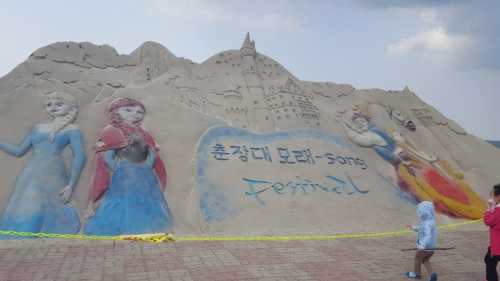Popular Trip Moments
This is the Hansan Mosi Hall in Seocheon-gun, Chungcheongnam-do, South Korea. | This is the Bird Ecology Exhibition Hall in Seocheon-gun, Chungcheongnam-do, South Korea. | This is the National Marine Biodiversity Institute in Seocheon-gun, Chungcheongnam-do, South Korea. | Chungnam's Family-Friendly Destination: Seocheon National Institute of Ecology | Bulgogi on a hot plate | Seocheon Restaurant | Places to visit in Seocheon | Seocheon Cafe | Seocheon octopus | <Low Coffee Bar>, a great place to heal while looking at the ocean view | Shinsung-ri reed field is the perfect place to go now | Janghang Songnim Shillim Bathhouse, a great place for a walk | Essential Travel Spot in Seocheon: Seocheon National Institute of Ecology | A place where you can enjoy the beautiful sea and forest scenery while taking a walk | A charming cafe with an attic overlooking the sea. | I went on a trip to Chunjang-daero | Walking along Chunjangdae Beach | <Sunset Pension> where you can enjoy the sea and the forest path of Ophiopogon japonicus | <National Ecology Center>, a great place for an indoor date for just 5,000 won | A large cafe that's great to visit when traveling to Chungnam😎 | Janghang Skywalk | A Botanical Garden with the Best Desert Representation | Watching the sunset at Seocheon Maebawi Park | Seocheon Mallyangpo Port Park | Janghang Songnim Forest Bathing Area, a place where the beautiful Ophiopogon japonicus blooms | Chunjangdae Beach | [Korea/Sochon] Changhang Skywalk towering over the western sea of Korea | Chunjangdae Beach Haerujil | Seocheon Hongwon Port Fish Market | Beautiful maple leaves in Gurumi Green Moonlight filming location: Munheon Seowon
Popular Travel Types
Recommended Attractions at Popular Destinations
Bangkok attraction near me | Manila attraction near me | Tokyo attraction near me | Taipei attraction near me | Hong Kong attraction near me | Seoul attraction near me | Kuala Lumpur attraction near me | Los Angeles attraction near me | Shanghai attraction near me | New York attraction near me | Shenzhen attraction near me | Osaka attraction near me | Singapore attraction near me | London attraction near me | Guangzhou attraction near me | San Francisco attraction near me | Beijing attraction near me | Macau attraction near me | Bali attraction near me | Jakarta attraction near me | Paris attraction near me | Ho Chi Minh City attraction near me | Istanbul attraction near me | Phuket attraction near me | Chicago attraction near me | Seattle attraction near me | Toronto attraction near me | Orlando attraction near me | Cebu attraction near me | Chiang Mai attraction near me
Popular Restaurants in Seocheon-gun
Hyangto Sikdang | Hongwonhang Hoetjip | Haegang Fwaet-jip | Samseong Sikdang | Sonmoa Hoegwan | Happiness Garden | Halmaeonjeongjip | Belri House | In Front of Station Stone Pot Rice | Ain Chicken Hof | Da Love Chicken | Sura Won | Folk Leaf Wraps and Rice | Hwe Miri Chicken | Kamelre on Karaoke Bar | The Jo Eun Chicken Pizza | Handmade Gather | Sam Georae Sundae Rice Soup | Famous House | Great Sage Restaurant | Seocheon Hometown Mountain Cheon | Obero | Joeun Sashimi to Rang | Ho Wheat Walnuts | Saojeong Sashimi Restaurant | General Hof and Chicken | Bread Long Life Yagop | Fox Hill House | Sea Noodles Soup | Yogerpresso
Popular Ranked Lists
Top 4 Best Things to Do in Lu'an | Popular Luxury Hotels Near Stagira-Akanthos | Popular Best Things to Do in Daocheng | Top 17 Local Restaurants in Tokyo | Top 3 Best Things to Do in Zaandam | Popular Best Things to Do in Menyuan | Top 14 Local Restaurants in Weihai | Popular Local Restaurants in Guangzhou | Top 5 Best Things to Do in Ulanqab | Popular Local Restaurants in Beijing | Top 12 Best Things to Do in Jinhua | Top 17 Local Restaurants in Bali | Popular Premium Hotels in Stirling | Top 3 Best Things to Do in Heihe | Popular Best Things to Do in Shaoyang | Top 5 Best Things to Do in Huaihua | Top 19 Local Restaurants in Xi'an | Top 16 Local Restaurants in Edinburgh | Popular Best Things to Do in Pattaya | Top 19 Local Restaurants in Guiyang | Popular Luxury Hotels Near Nesselwang | Popular Local Restaurants in Shanghai | Popular Premium Hotels in Hague | Popular Luxury Hotels Near Nachikatsuura | Popular Best Things to Do in Longyou | Top 7 Best Things to Do in Phi Phi Islands | Top 5 Best Things to Do in Weinan | Top 20 Local Restaurants in London | Popular Luxury Hotels Near Miami Beach | Top 4 Best Things to Do in Tongliao
Payment Methods
Our Partners
Copyright © 2025 Trip.com Travel Singapore Pte. Ltd. All rights reserved
Site Operator: Trip.com Travel Singapore Pte. Ltd.
Site Operator: Trip.com Travel Singapore Pte. Ltd.






















